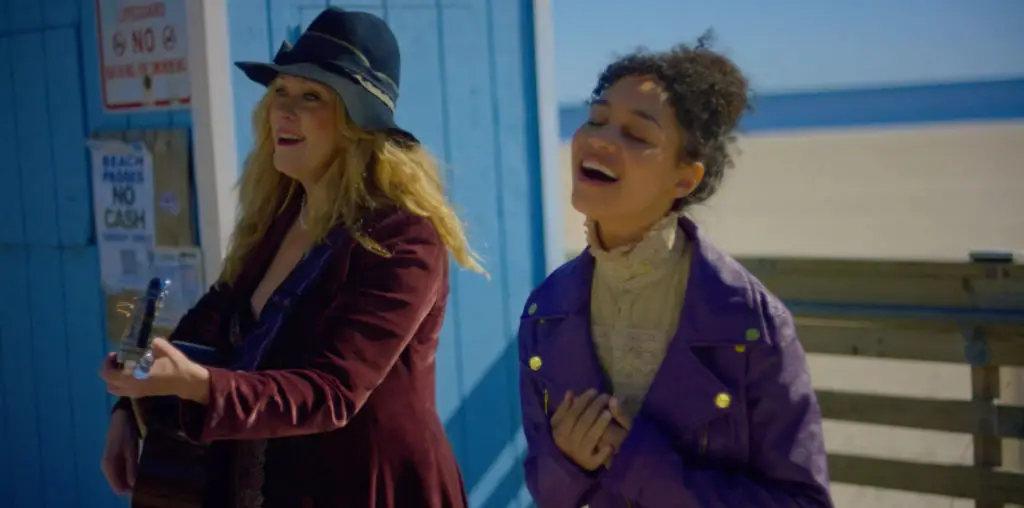
The big screen has a very difficult time capturing the talent of James Van Der Beek – literally. The aspect ratio of projected film simply cannot accommodate the full breadth of his enormous melon head. Each time we see his character, Sean Bateman, photographed slightly from above in full close-up – and we see this A LOT – his massive forehead rises majestically out of frame, cutting off a good 15 inches of Van Der Beek Skull. But that doesn’t stop Dawson from throwing his remaining 95% headlong into his role as an emotionally dormant, chemically and physically self-destructive college student. It’s just a shame he’s investing so much energy in such turgid s**t.
At least he’s got company. There are plenty of well-trained, well-toned young actors degrading both their characters and themselves in “The Rules of Attraction.” I guess they were hoping that, with the right amount of editing, their performances as self-involved, rich private school co-eds partying their way into a series of misguided choices would come across as dark satire, or at least something kind of shocking and funny. It doesn’t. I could blame the actors, but they were all pretty game and generally enjoyable, especially the totally unrestrained Russell Sams, who dominates the film in his two short scenes. I could blame the material – the specific kind of satire and shock-value content of Bret Easton Ellis’ novel about love triangles, grotesque privilege, and total nihilism in Reagan-era New England dates itself pretty easily – but Mary Harron managed to handle similar stuff really well in her stylish and genuinely comic “American Psycho.”
Maybe it’s writer/director Roger Avary’s approach. He has taken the source material too seriously, and presented it almost at face value. Avary seems to desperately want us to see every single vagary these (young! wealthy! fit!) characters subject each other to, often multiple times, and say to ourselves, “dude, that’s seriously f****d up!” He doesn’t cut away from anything, and refuses to allow that the emotional themes and types of satire that were unnerving in the late 80s have already been played out again and again. So instead, Avary shows us pill-popping upper-class moms, crazy, coked-up drug dealers, sleazy college professors, a painfully extended and highly goth suicide, an O.D., a former child actor shooting up between his toes, and even the vain and lonely character Paul, following up his yoga session with a cigarette. There is even a scene in which Shannon Sossamyn (as Lauren) loses her virginity and gets vomited on at the same time, but movie audiences have already seen, and even grown comfortable, with characters screwing pie, accidentally drinking sperm, getting peed on, and more, all played for laughs.
To the film’s credit, Avary makes a few really inspired technical choices. The recurring device of playing scenes backward is as structural as it is creative – the whole film is actually one long flashback, with information in the first scene made clear by the last scene. In another scene, a strategically placed snowflake makes a cool and simple statement about how totally disaffected the principal character, Sean, is. And the sequence in which Victor (played by Kip Pardue) recounts his entire semester abroad in dull voice-over on top of a streaming, quick-cut montage of European landmarks and bored sexual encounters says everything you need to know about this character – and all of the film’s characters – in just two minutes. That scene, and Sean’s excellent plea to Lauren – “I really did try to kill myself, right before I faked it” – are worth a viewing.
